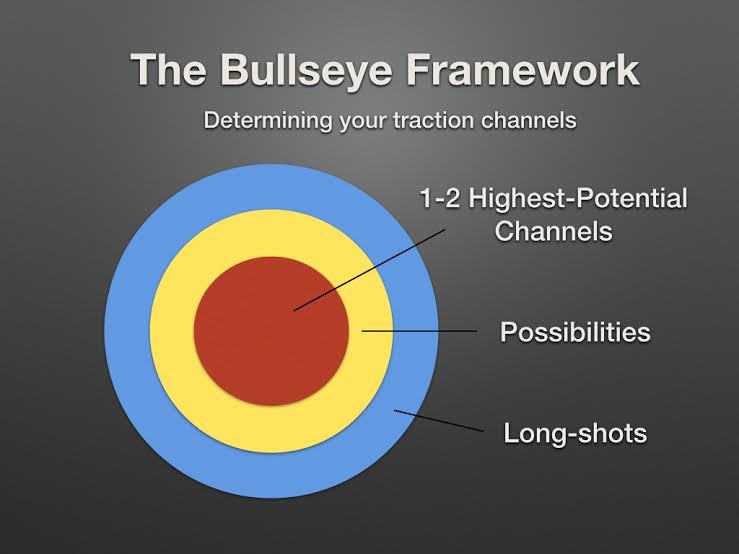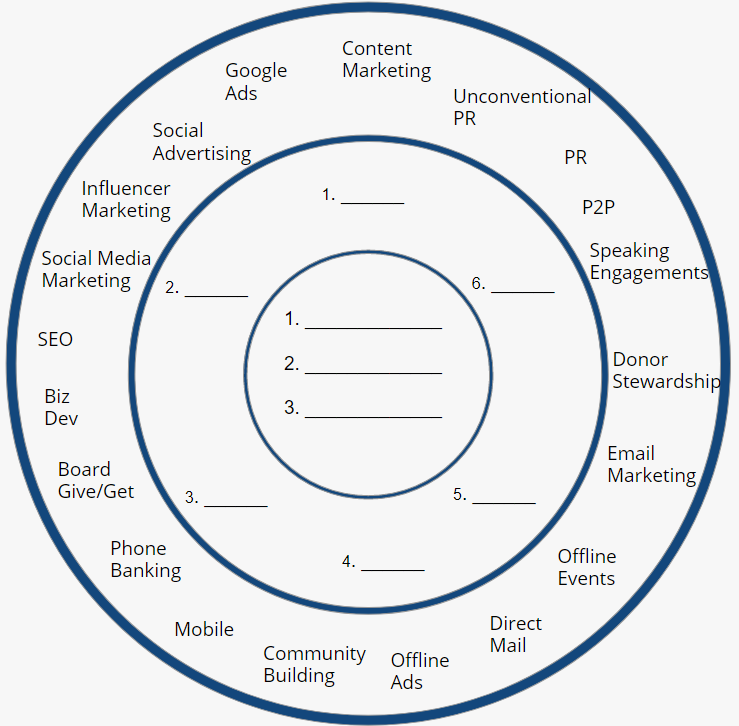The Bullseye Strategy – which marketing channels actually bring you business
 Leadership
Leadership

The bullseye strategy is one of the most compelling exercises any company should do, no matter the size, to evaluate their current traction and what are the loopholes of their pipeline generation.
The insight you get might actually be the winning strategy for your company.
The bullseye strategy insists on focusing on one winning channel and I agree up to a point – Sure, let’s find that one marketing channel that will create differentiation and ultimately success. But you do not have to kill all the other channels that are working – you can have three or four successful channels, it only depends on how focused you are on them. Not sure how wise would it be, especially for medium and large companies, to put all their eggs in one basket.
And now a bit more about the mystery framework:

The bullseye framework was created by by Gabriel Weinberg and Justin Mares in their book, Traction. Please have a read and let me know what is your perspective.
So, this book considers 19 traction channels (the terminology might be a bit different internationally) :
- Targeting Blogs
- Publicity
- Unconventional PR
- Search Engine Marketing
- Social and Display Ads
- Offline Ads
- Search Engine Optimization
- Content Marketing
- Email Marketing
- Viral Marketing
- Engineering as Marketing
- Business Development
- Sales
- Affiliate Programs
- Existing Platforms
- Trade Shows
- Offline Events
- Speaking Engagements
- Community Building
The Bullseye Framework contains three main layers.

The Outer ring – Brainstorm ALL channels
The Outer ring will be focusing on all each channel and really discussing new ideas, the pro and cons. This is really a stage of big and bold on your ideas. If I want to really do good online marketing, how should better set my targeting? If we do events, how can make them really general new business and increase cross selling? What can we do with our content marketing to really engage with our Audience?
Write down what success would look like for each channel.
“Everyone starts off with biases. The outer ring is meant to help you systematically counteract your traction channel biases. It is important that you not dismiss any traction channel in this step. You should be able to think of at least one idea for every channel. In practice, a lot of founders mess up this step by not brainstorming long and deep enough to get useful ideas for each channel.” Gabriel Weinberg
The Middle ring – test, iterate, select
This is the part that you will rank and evaluate all channels, out of which you will choose a maximum of six most effective channels.
For smaller companies and not a lot of resources available, three should suffice. And this is the part you get to work – this is where you create small and cheap traction tests.
Let’s take digital marketing – invest a small amount and see the click rate, CTR rate and awareness. Has the needle moved in the right direction?
Let’s consider email marketing – start a new campaign and see the engagement of your database – open, clicks, the users who actually downloaded the collateral, etc.
The Inner Ring
Now this is the hard part. Based on the evidence and all the test, the book advises to choose only one, the most successful one.
I would say focus on one at a time instead as other marketing channels bleed into one another.
For example, let’s take SEO as the best channel chosen – for a good SEO you need to create unique content, which is part of another channel. Also for SEO, you need to be getting links, which you can get from publicity (and that may be social media, affiliate marketing, etc).
“The goal of this focusing step is quite simple: to wring every bit of traction out of your core channel. To do so, you will be continually experimenting to find out exactly how to optimize growth in this traction channel.” Gabriel Weinberg
This was a long story, but I believe worth it. So choose a month, or a quarter or two quarters in a year in which instead of holding the typical executive meetings or company rocks definition – you focus on this tactic instead.
You invite the management team to think differently, out of the box and really focus on what can be the most important metric: traction.


